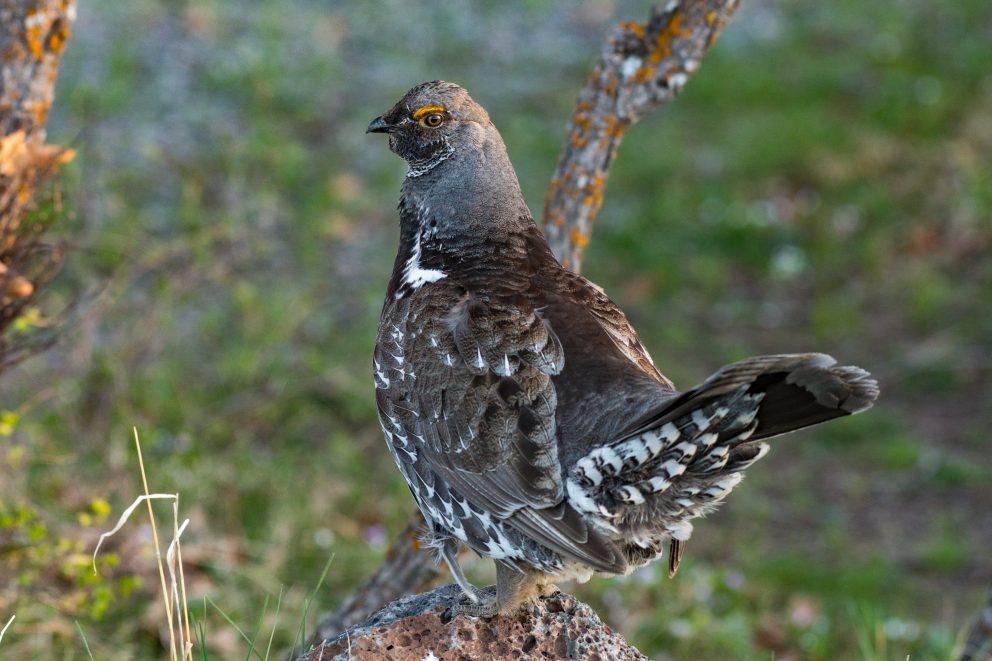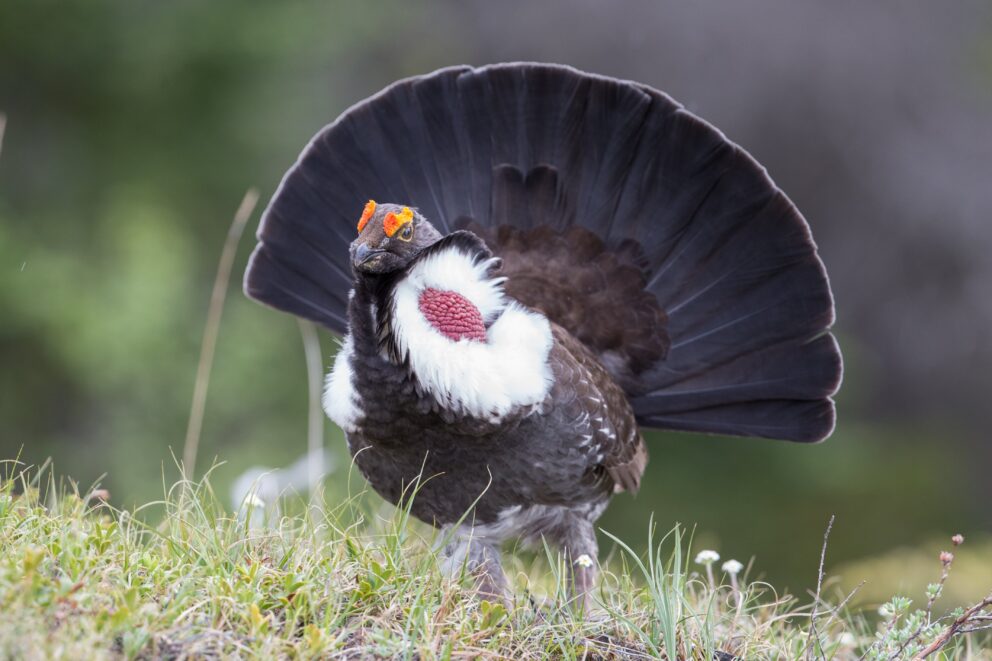- SCIENTIFIC NAME
- Dendragapus obscurus
- CLASSIFICATION
- Bird
- LIFE SPAN
- 1-14 Years
- SIZE
- 17.3-22.4” | 2.56-2.81lbs
- STATE CONSERVATION STATUS
-
- Priority Species
- State Protected
- FEDERAL CONSERVATION STATUS
- Least Concern
- GAME STATUS
- Game
- GAME TYPE
- Upland Game
- Washoe
- Humboldt
- Pershing
- Churchill
- Mineral
- Lyon
- Douglas
- Carson City
- Storey
- Elko
- Lander
- Eureka
- White Pine
- Esmeralda
- Nye
- Lincoln
- Clark
Habitat & Range
These birds live in high-elevation montane forests and the surrounding sagebrush and shrublands. In Nevada, they are found in small pockets in the central and northeastern parts of the state.
- Alpine forests of the Sierras
- Grasslands
- Upland Forests
Threats
- Habitat Loss
Natural History
Dusky Grouse occupy the high elevation forests of inland regions in the western U.S. and Canada. They are mainly ground foragers in the summer, feeding on berries, leaves, buds and small insects. In winter, when snow cover dominates the landscape, their diet may consist entirely of conifer needles and buds.
During the breeding season, males will claim and defend a mating territory and advertise to females by fanning out their tail feathers, exposing their neck sac, and giving off low-pitched hoot calls while flapping their wings. Females are highly defensive of their young and will feign injury to distract and lure away potential predators. If unsuccessful, they will aggressively hiss and strike at intruders.
Fun Facts














